First published August 2021 | Words and photos by Vietnam Coracle | 2 comments
This post was last updated 3 years ago. Please check the comments section for possible updates, or read more on my Updates & Accuracy page.
INTRODUCTION | GUIDE | MAP | RELATED POSTS
A seafood noodle soup native to Phu Quoc Island but with roots in the central coastal region of the mainland, bún quậy literally means ‘stirring noodles’. Sourcing ingredients from the rich seas of the Gulf of Thailand, bún quậy is all about the freshness of ingredients and, like so many Vietnamese dishes, a great dipping sauce. Best enjoyed on Phu Quoc, bún quậy is sold all over the island, but one place in particular is synonymous with the dish: Kiến Xây. What started out as a family soup house has grown into a modest chain with multiple locations. Bún quậy‘s popularity grew with the advent of domestic tourism to Phu Quoc over the last decade. When Vietnamese travel within their own borders, one of the first questions visitors ask on arrival at a new destination is, “Ở đây có món ăn đặc sản không?” (What’s the speciality of this region?). On Phu Quoc, locals would answer by pointing visitors to Kiến Xây for a bowl of bún quậy. Returning home, millennials and Gen Z-ers wrote about bún quậy and Kiến Xây on their blogs, online forums and social media pages. It wasn’t long before bún quậy was a famous dish, Kiến Xây a local legend and a must-do-see-eat experience for any domestic visitor to Phu Quoc (as it should be for any international visitor or expatriate, too).
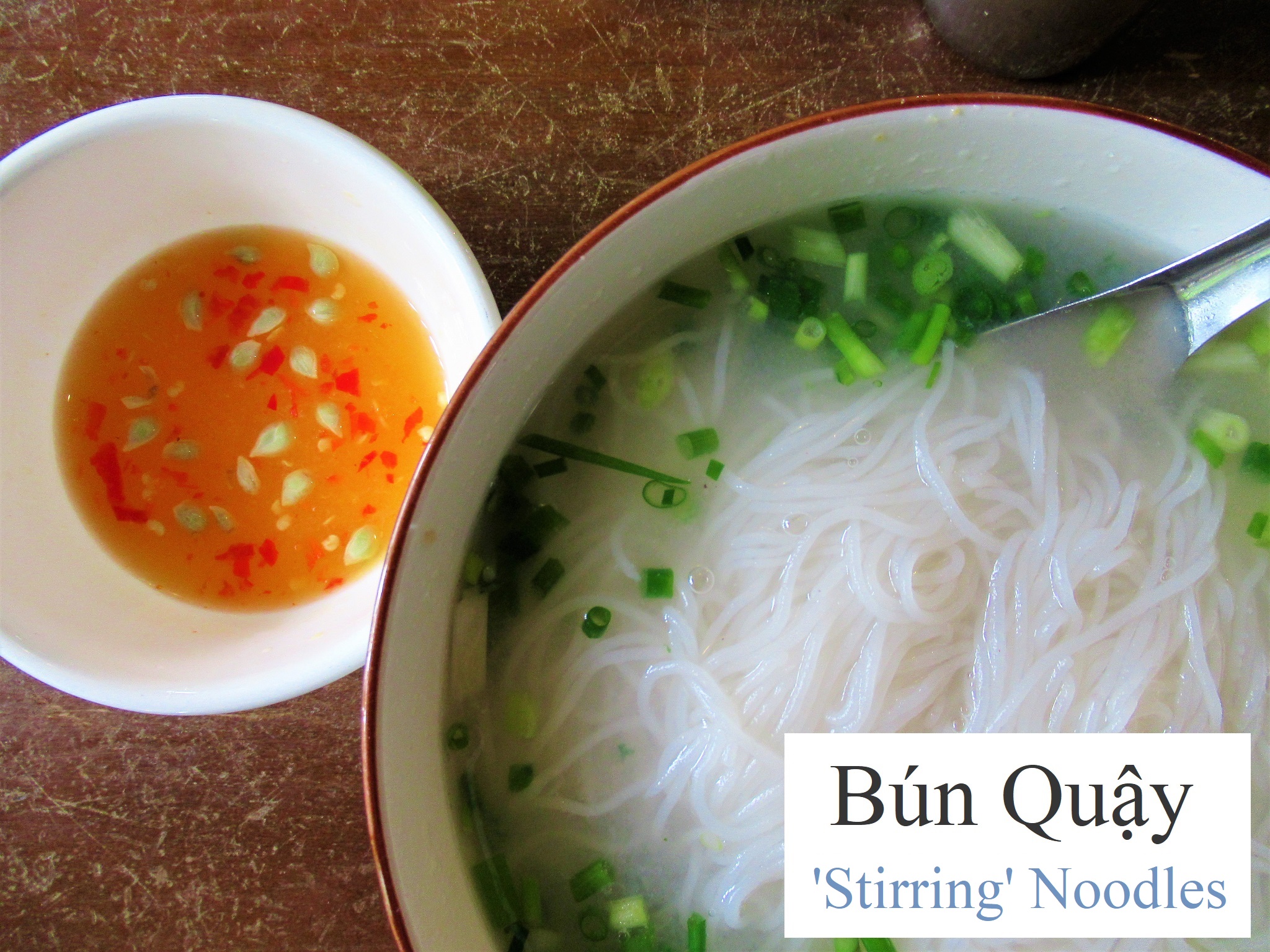
[Back Top]
GUIDE: BÚN QUẬY NOODLES
On this page, I’ve written a description of bún quậy, including its origins, what’s in it, where to eat it and how to eat it. I’ve also mapped all locations of Kiến Xây so readers can find the one nearest to them and go try a bowl. Click an item from the contents below to read more about it:
*Please Support Vietnam Coracle: I never receive payment for anything I write: all my content is free to read & independently financed. There’s no sponsored content whatsoever. If you like this guide, please consider supporting the work I do. See my Support Page for details. Thank you, Tom
MAP OF LOCATIONS:
The 8 locations of Bún Quậy Kiến Xây
View in a LARGER MAP
What is Bún Quậy?
Name & Origin: Bún quậy is most likely a riff on another seafood noodle soup, bún tôm, from the central coastal province of Bình Định. Settlers from that province brought the dish to Phu Quoc and, over time, cooks on the island introduced different local ingredients to the soup, tweaking the recipe to suit local palates until, eventually, a new dish was born. These days, bún quậy is an outright, stand-alone, Phu Quoc Island speciality; just like bún kèn.
As with many such dishes in Vietnam, the name ‘bún quậy’ is descriptive: literally ‘stirring noodles’. The name refers to the action necessary in mixing the all important nước chấm (dipping sauce) into the broth, which ties the dish together (see How to Eat). When the dish started to gain popularity among Phu Quoc residents it had no name. Thus, an informal ‘folk name’ began to be used to refer to the dish based on the aspect that most distinguished it from other noodle soups. Imagine a conversation such as this: “Where shall we go for lunch?”, “Let’s go to that place where you have to stir the noodles.” Over time, this folk name became mainstream until ‘stirring noodles’ was no longer a description of the dish, but the name of the dish itself: bún quậy. Vietnamese cuisine is full of instances like this – bánh xèo (‘sizzling pancakes’), bò lúc lắc (‘shaking beef’): at once prosaic and poetic.
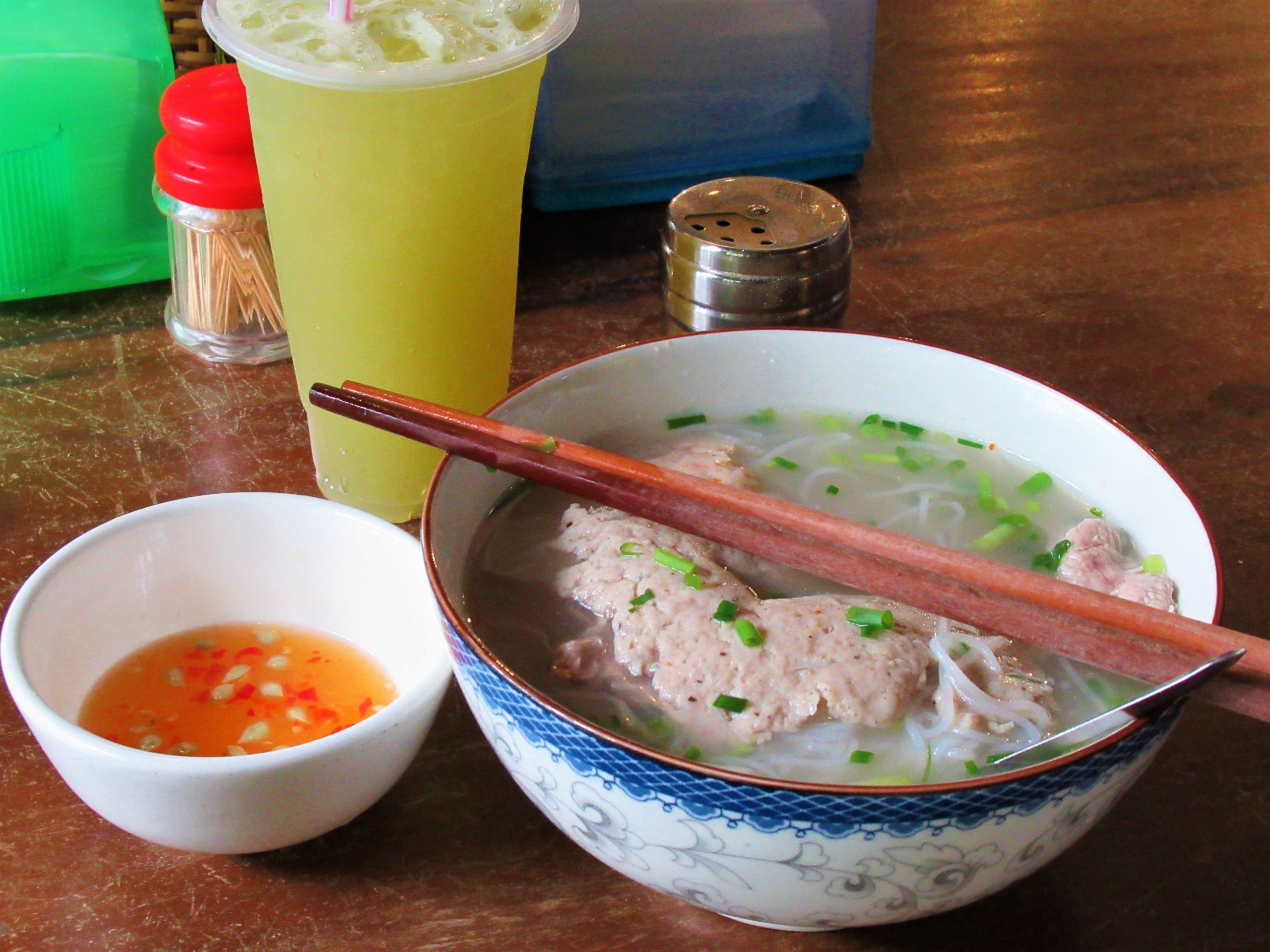
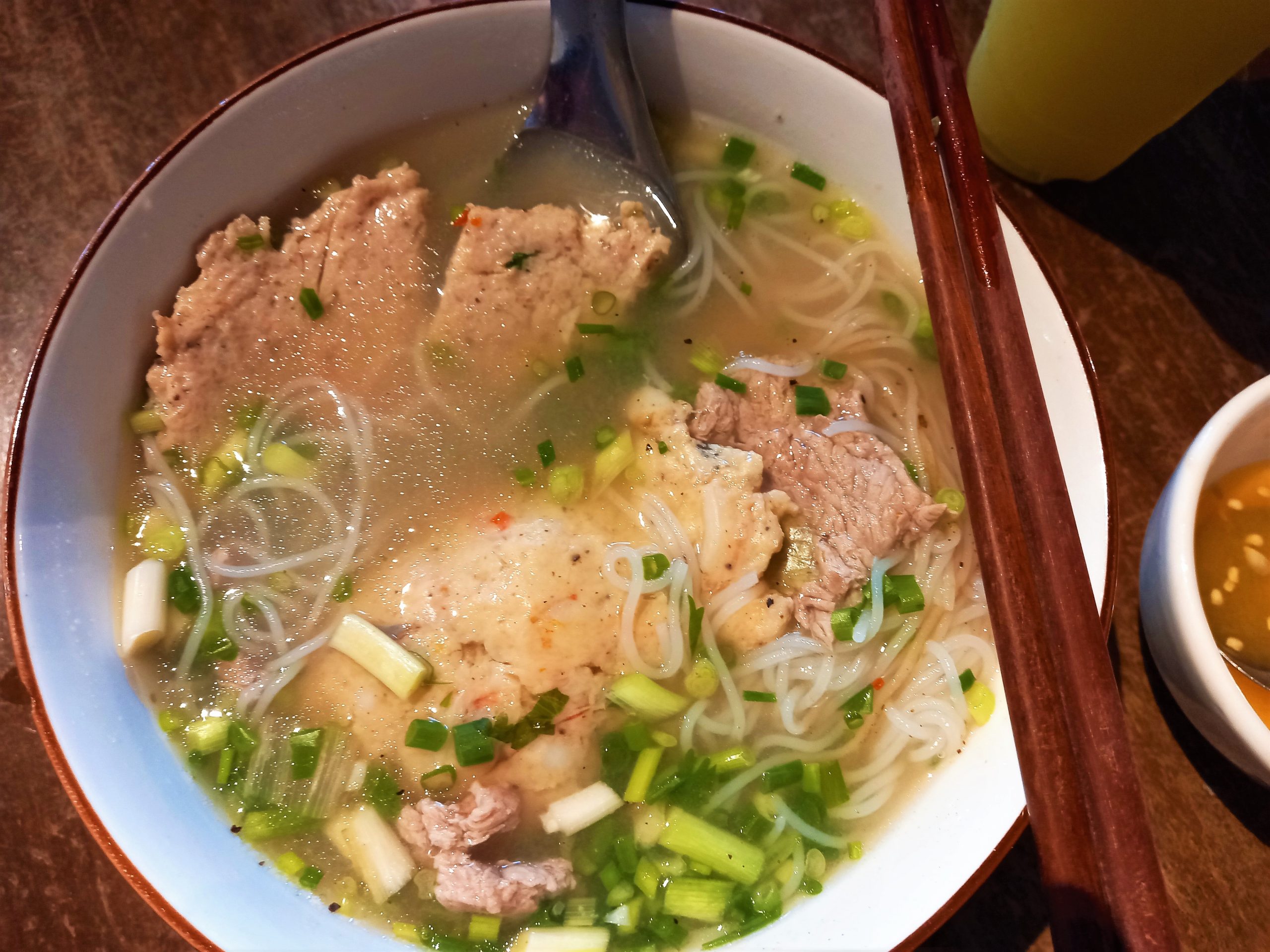
What’s in it: A seafood-based noodle soup, bún quậy may not be as photogenic as other Vietnamese soups, but it’s just as fresh, complex, hearty and delicious as any of the more famous noodle dishes in the nation’s cuisine. White rice noodles (bún) and a simple, clear, slightly sweet broth are the bare bones of the dish. But, as ever, it’s the additions, accoutrements, sauces and chunky bits that really make this soup stand out. In the broth you’ll find whole baby squid, thick layers of shrimp paste, flattened fish cake patties, and even thin slices of beef. Garnishes include chopped spring onions, famous Phu Quoc black pepper and, most importantly, the dipping sauce which gives the dish its name and fame. A combination of four elements – salt, sodium glutamate crystals (MSG), chilli and calamansi – this nước chấm (dipping sauce) hits all the taste buds: sweet, sour, salty, spicy, umami. Prepare your dipping sauce to suit your personal taste (see How to Eat), stir a generous spoonful of it into your noodles and let the flavours imbue the broth. This sauce is the essential component of the dish: it ties everything together. No nước chấm, no bún quậy.
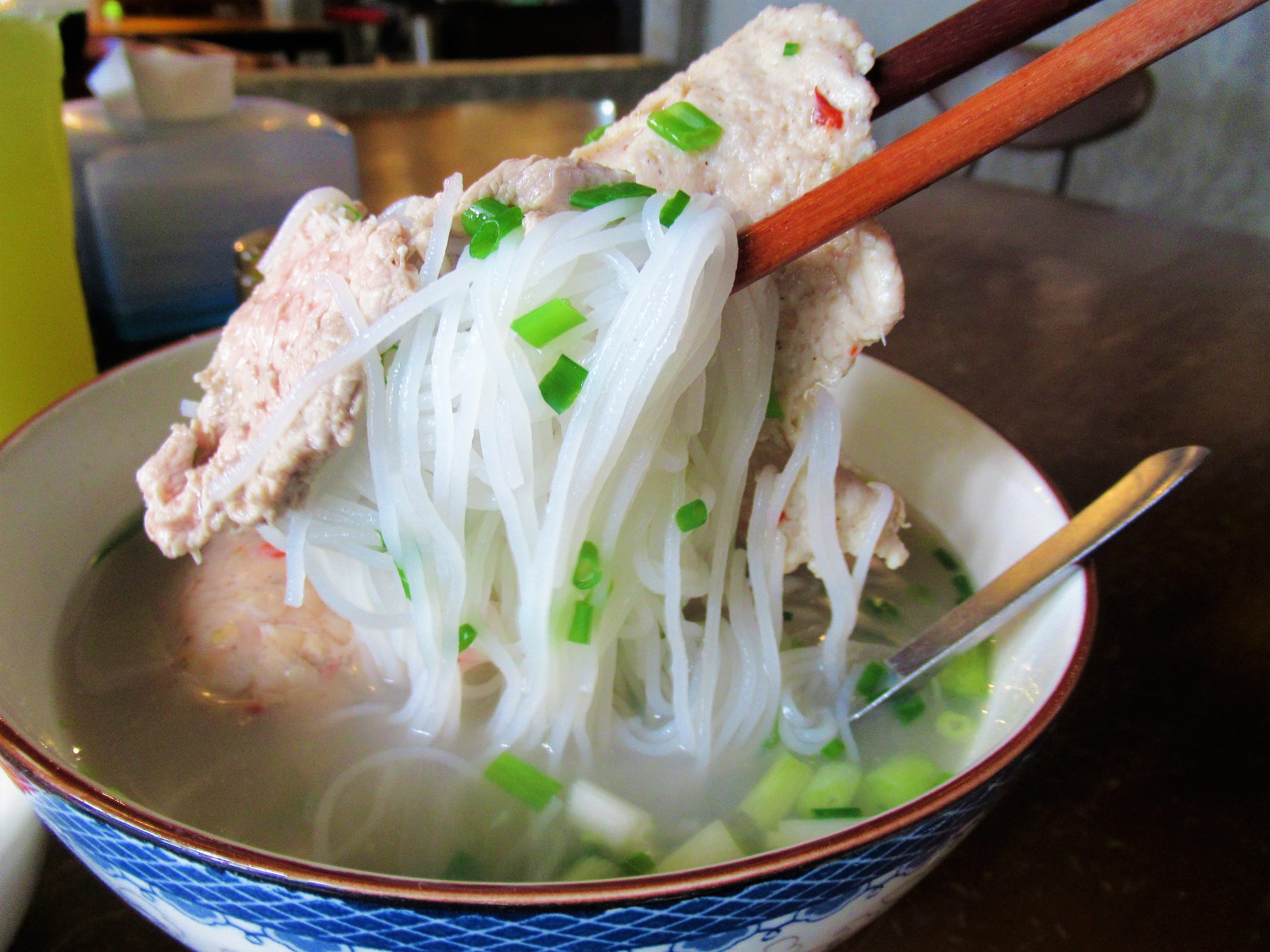
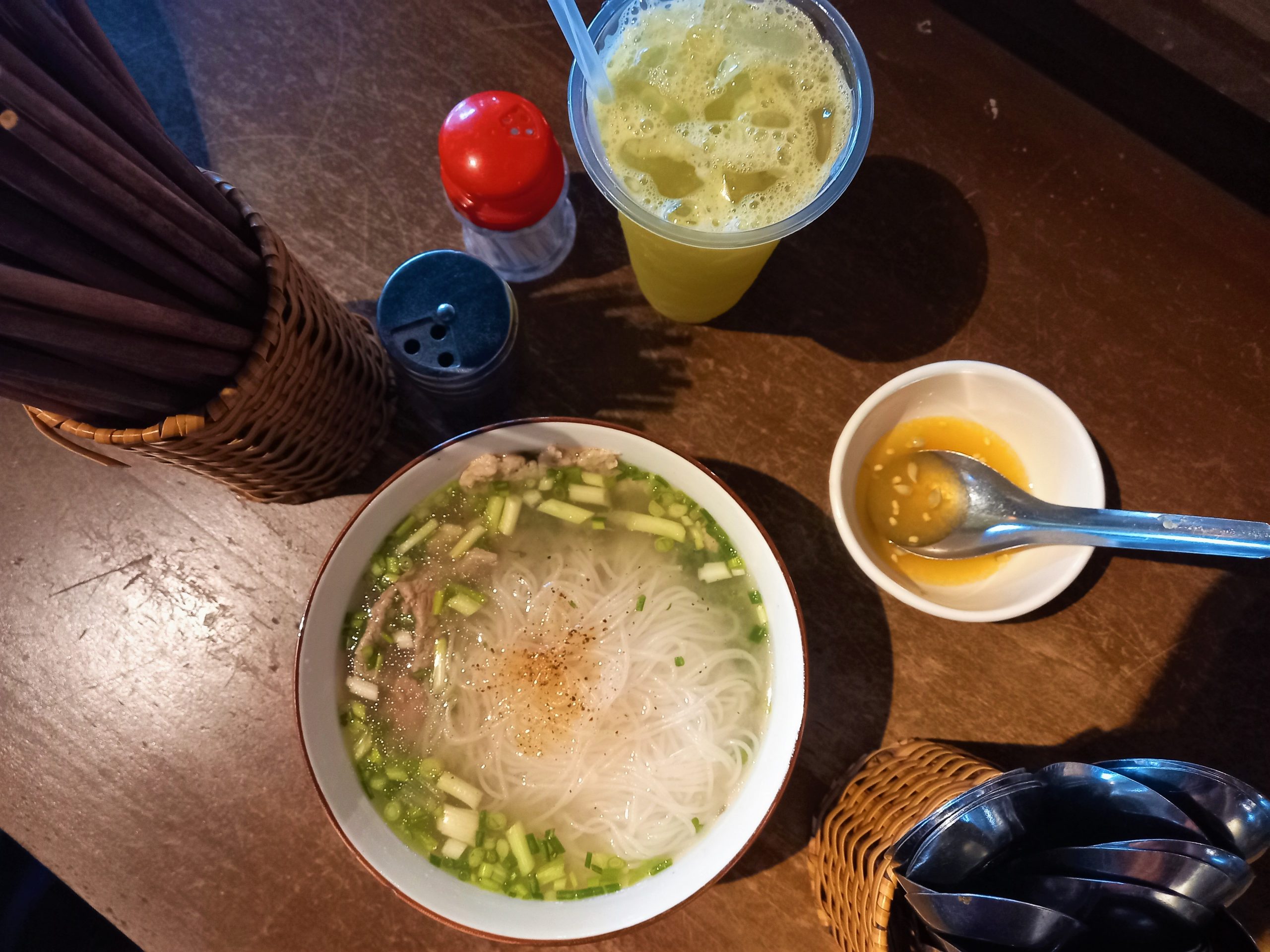
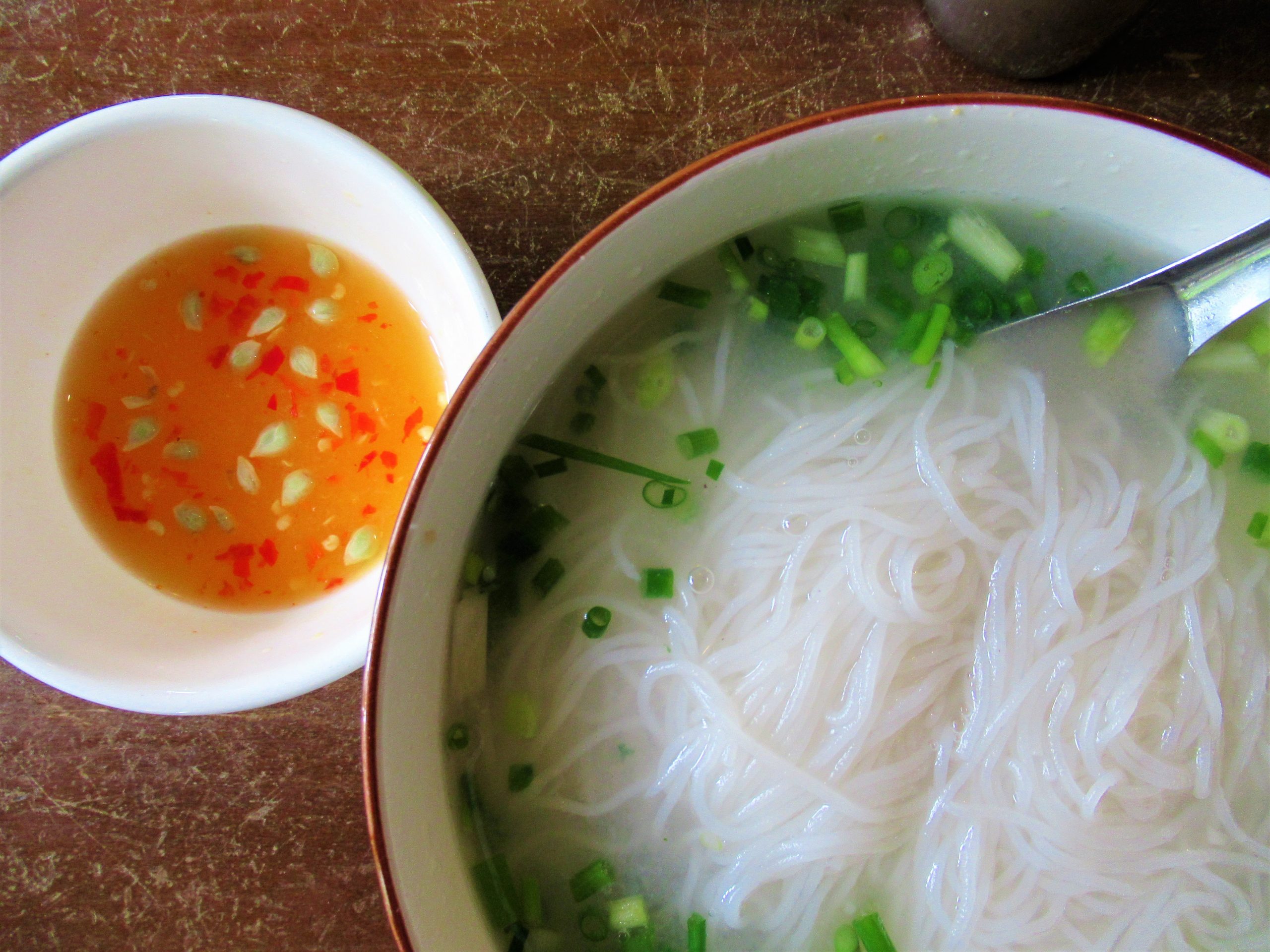
Where to Eat Bún Quậy?
The Kiến Xây Chain: On Phu Quoc Island, Kiến Xây is synonymous with bún quậy. What started out as a family-run noodle stall on the island at the dawn of the millennium, Kiến Xây has grown into a small chain of bún quậy restaurants, with five locations on the island and two on the mainland: one in Rach Gia (port city for ferries to Phu Quoc), the other in Saigon (Ho Chi Minh City). But the original location on the harbourfront in Duong Dong, the island’s main town, is still generally regarded as the best of all the locations for quality and atmosphere. [View Map]
Indeed, Kiến Xây claim to be the original bún quậy on the island. Hence, on Phu Quoc bún quậy and Kiến Xây are inseparable. Based on their story (told through pictures and words in their restaurants and on their website) and on their popularity among the local community and visitors alike, I’ve no reason to doubt the veracity of this claim. There’s also no doubt that the quality of bún quậy at Kiến Xây is far superior than at other establishments. In fact, when I first heard of bún quậy and tried it several times on Phu Quoc and in Rach Gia at other restaurants, I couldn’t understand why people were so enamoured of the dish. It was only when I eventually ate bún quậy at Kiến Xây in Duong Dong town that the dish and its reputation finally made sense to me.
As we’ve already seen, there’s always a story behind a name in Vietnam. If I understand correctly, the name ‘Kiến Xây’ comes from the owner’s family having children all studying either architecture (kiến trúc) or construction (xây dựng), hence Kiến + Xây.


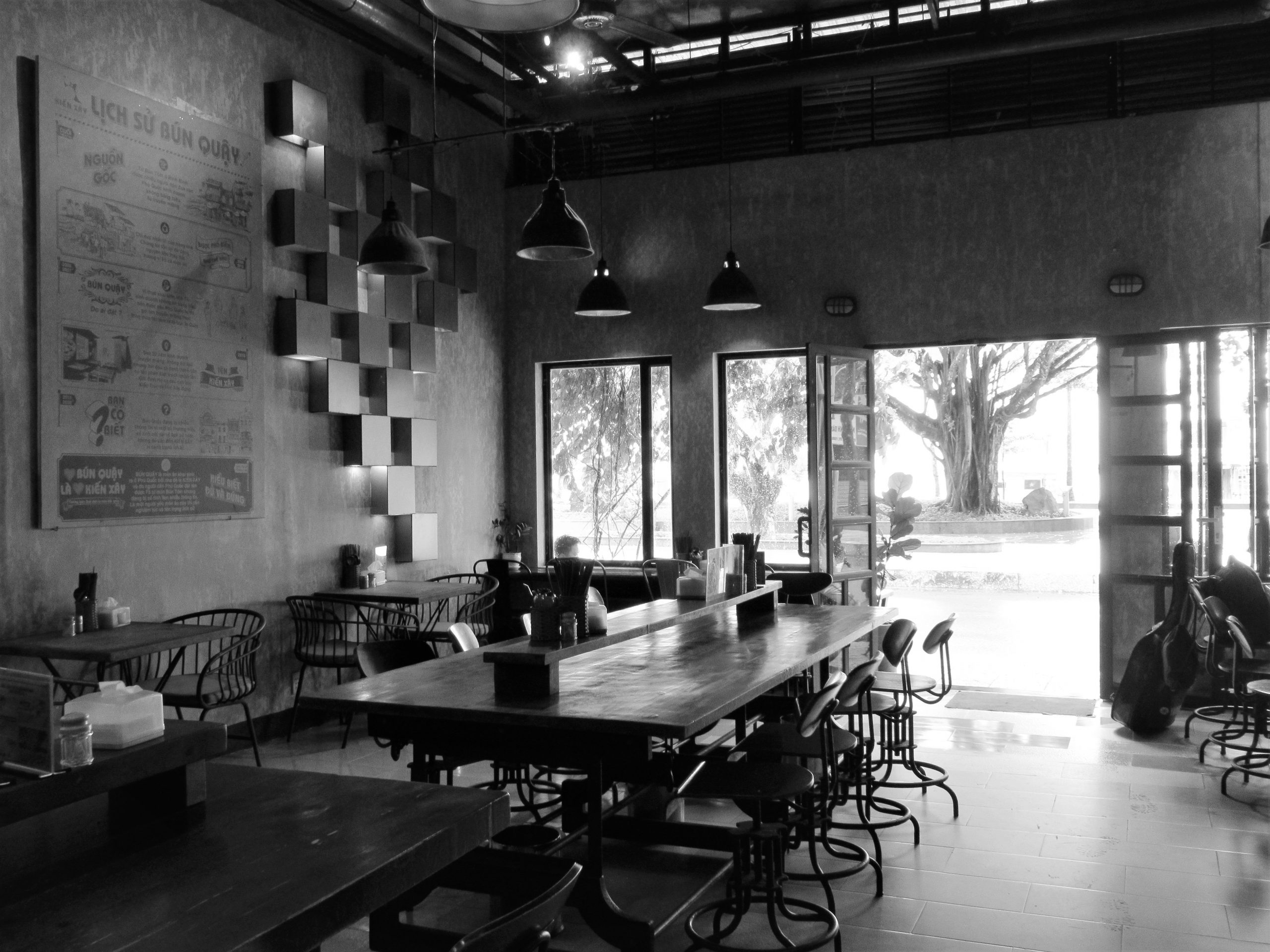
Freshness of Ingredients: Although I can’t speak for the other locations of Kiến Xây, the freshness of ingredients at the original location on the harbourfront is exceptional. The bún (rice noodles), shrimp paste and fish cakes (made from cá trích – local herring) are all freshly made on the premises. You can really taste the difference: everything is crisp, bright, lively and full of flavour. The bún and the seafood are so fresh that all they need to cook is a splash of hot, hearty broth poured over them in the bowl just before serving.
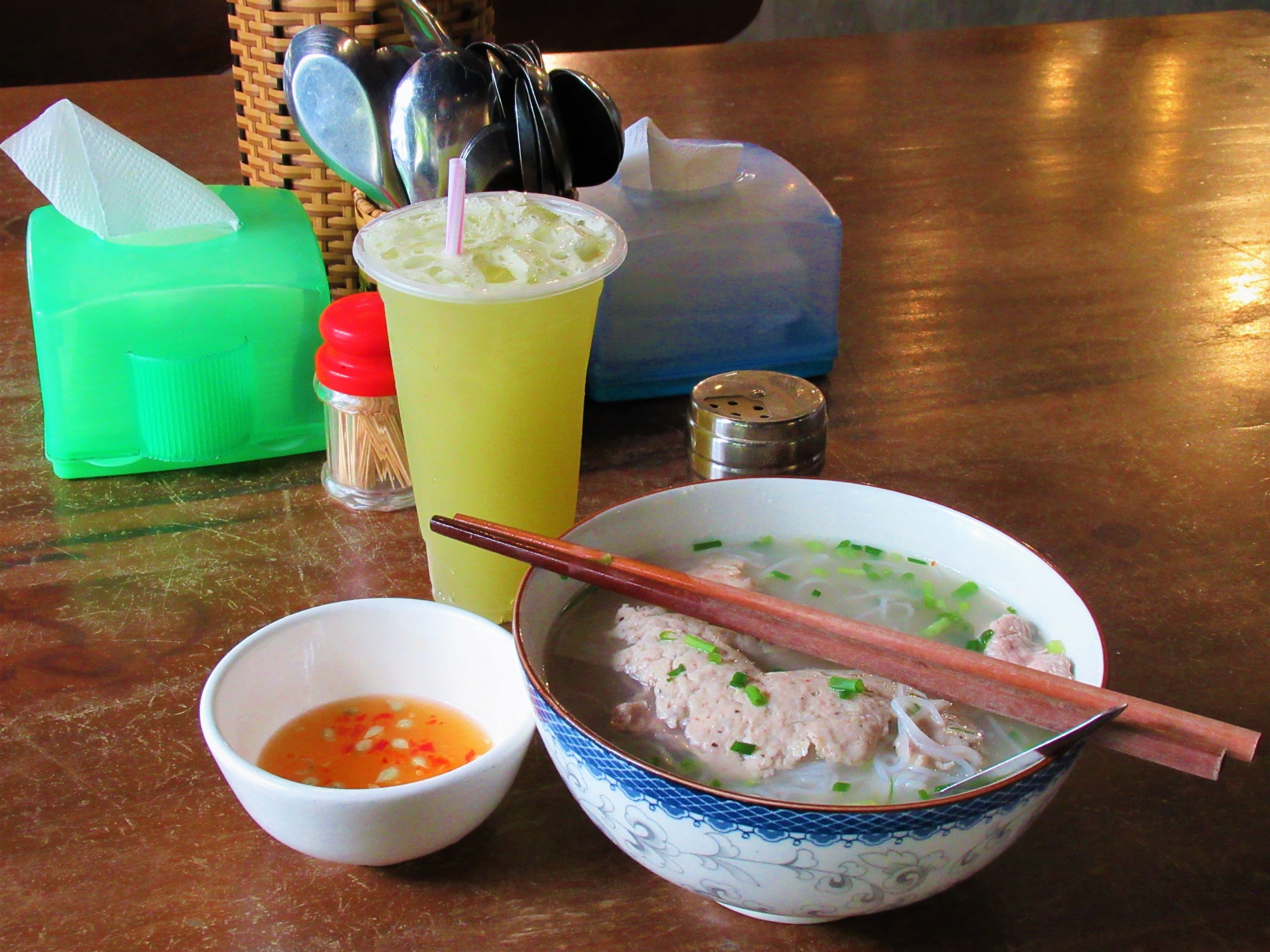
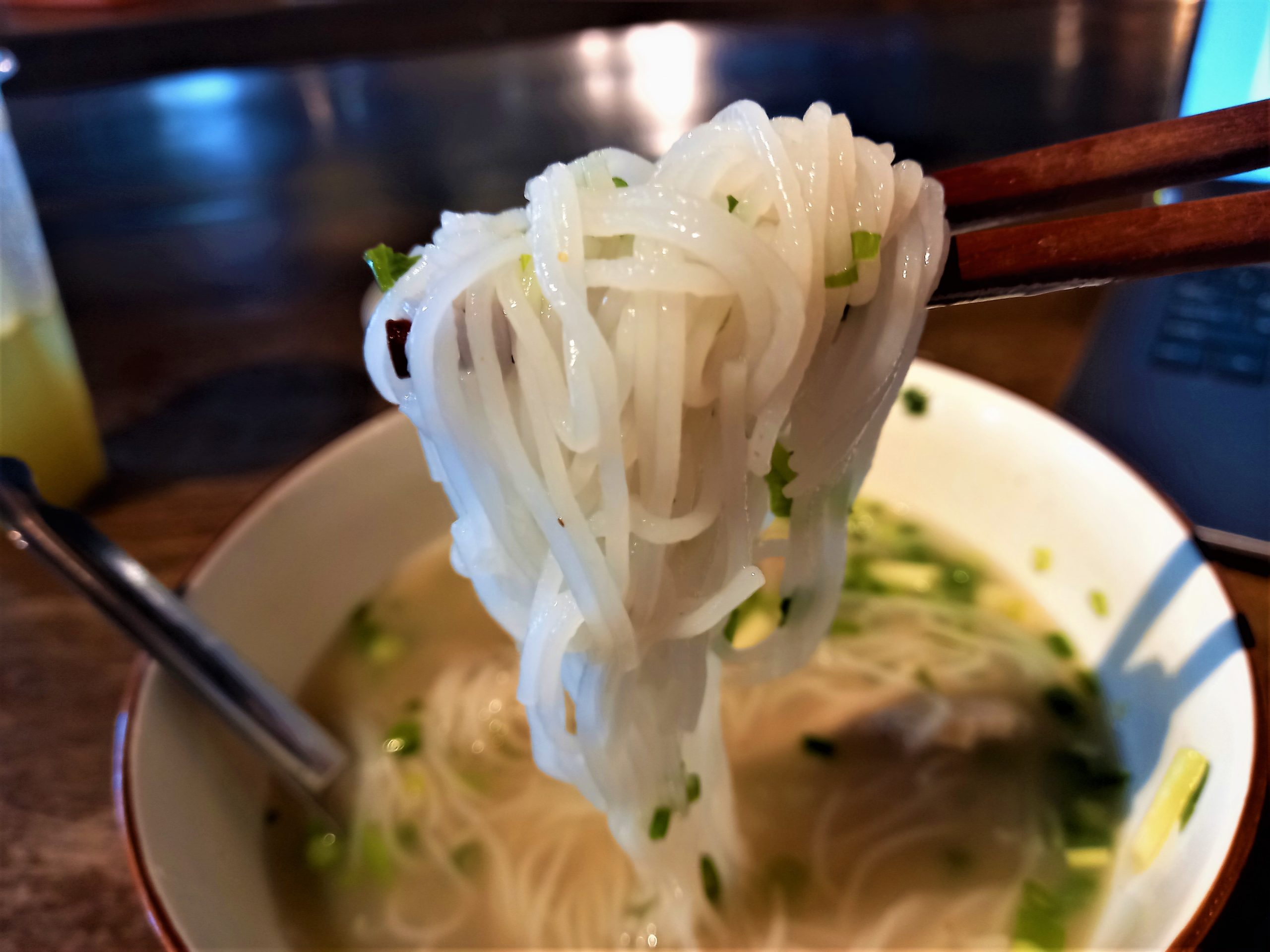
Interior Design: With seating capacity for some 50 or more diners, the interior décor of Kiến Xây’s harbourfront property is urban-chic: a kind of industrial, converted-warehouse, modern look with large wooden tables, metallic chairs, bare concrete walls and exposed piping. Comfortable and good for photos, but also quite jarring at first for a Vietnamese noodle joint – especially one that extolls its family roots and traditions – the restaurant still has all the informality and human warmth that you’d expect of a local soup house. The walls are plastered will cartoon-style illustrations of the story behind bún quậy and Kiến Xây, as well as useful instructions on how to eat and order. Overall it’s a neat, modern, concept-driven restaurant that, despite its attention to décor and style, doesn’t lose sight of its primary focus: the noodles, the broth and the accoutrements.
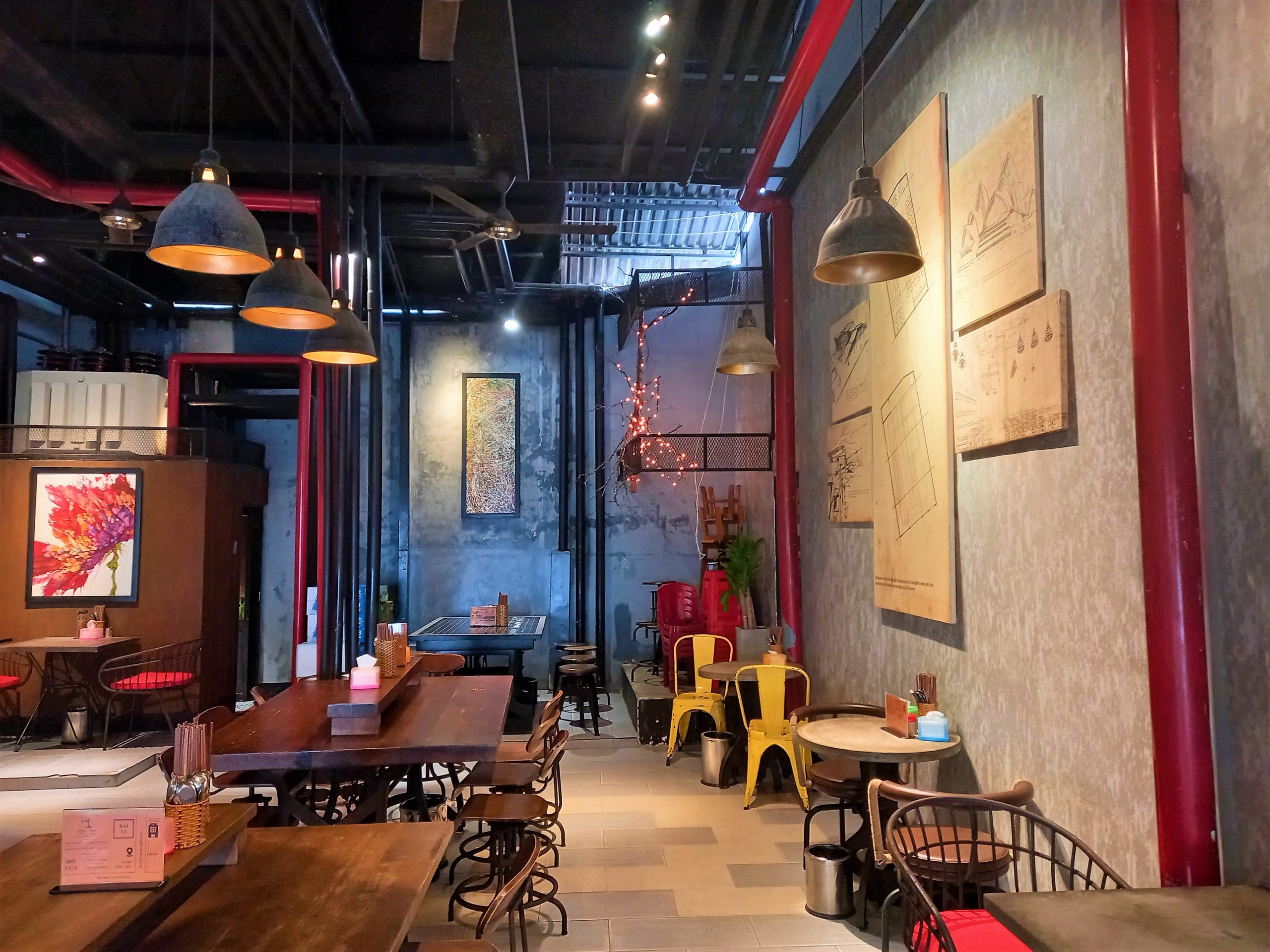
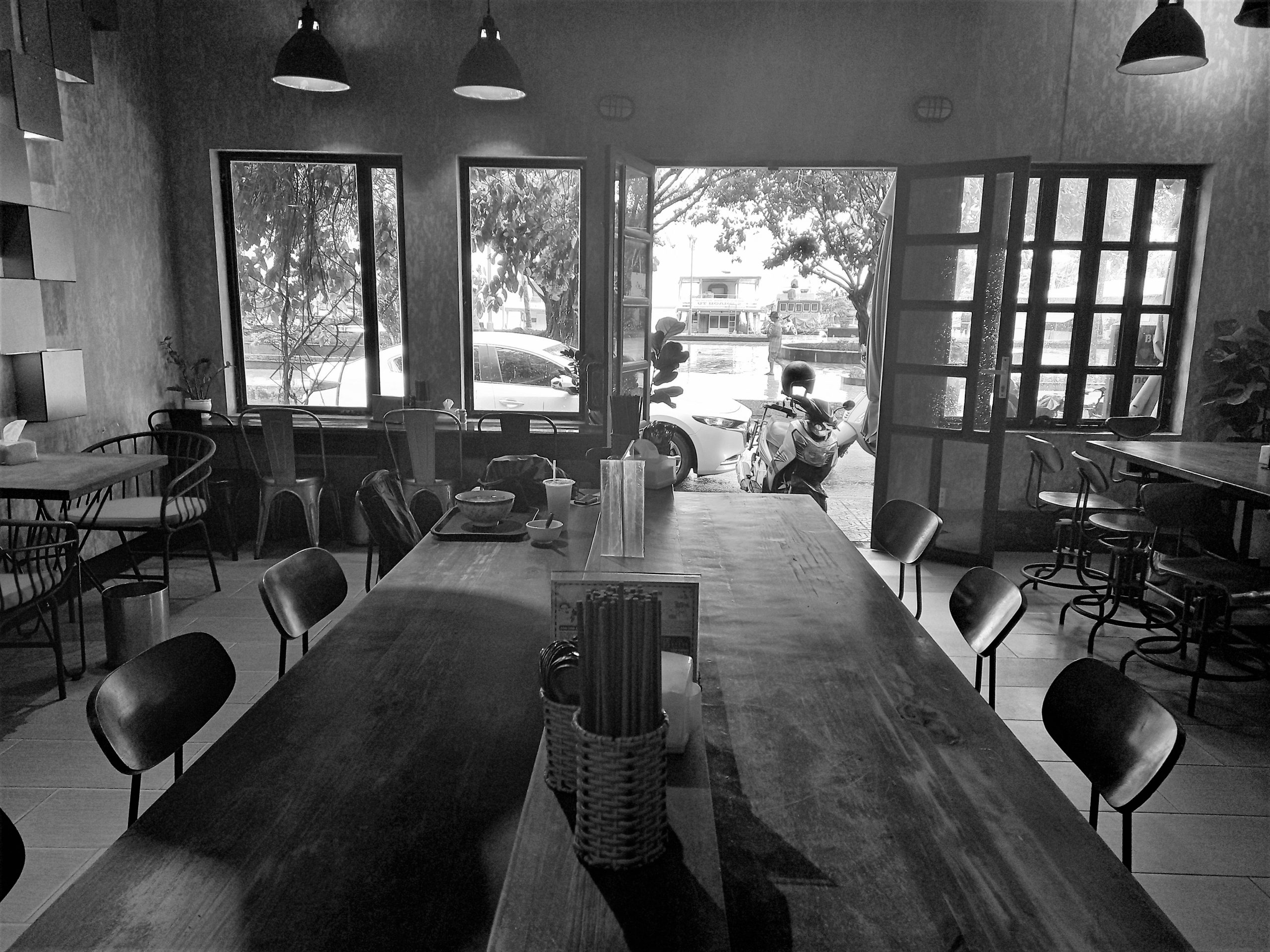
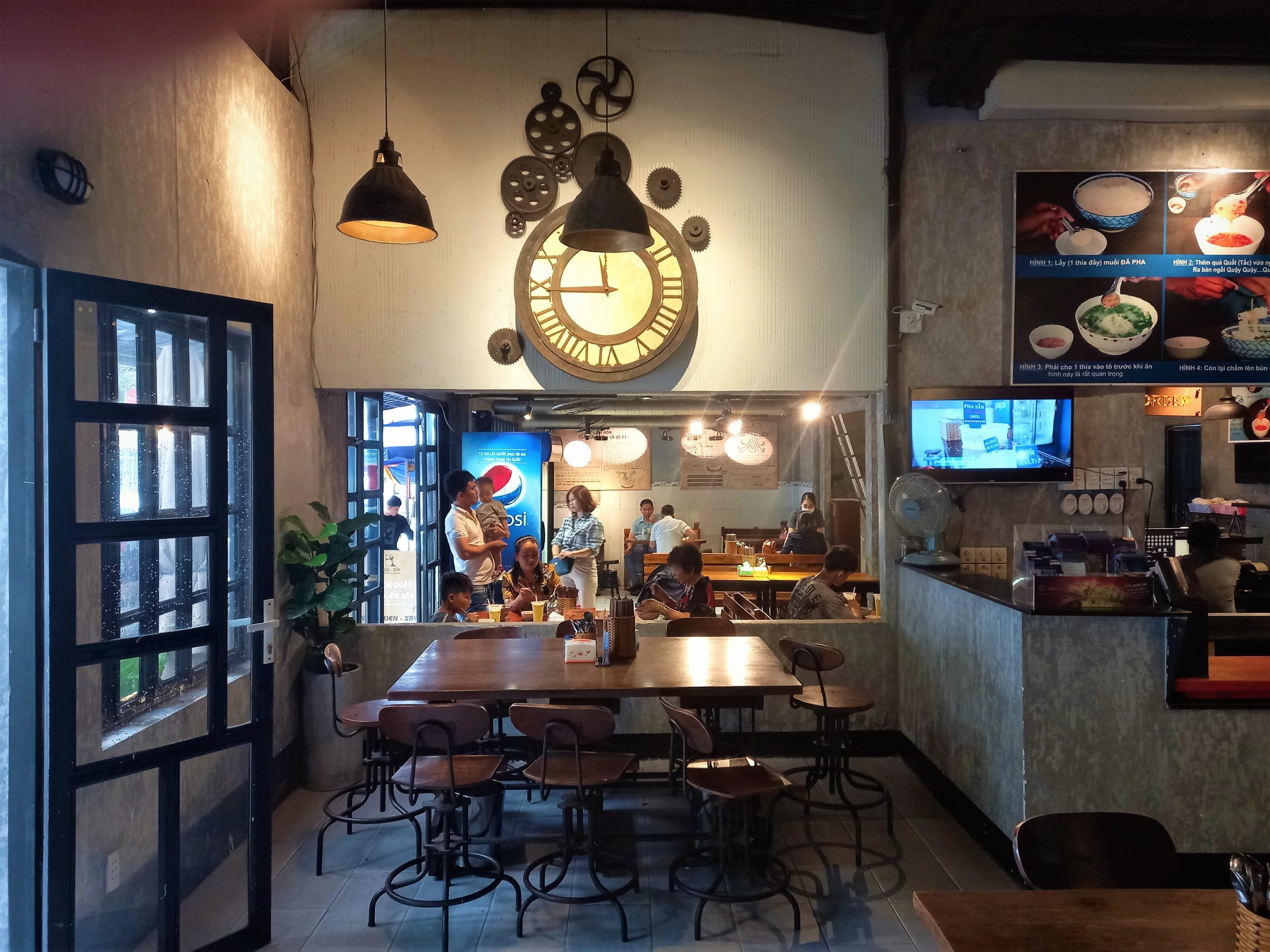
How to Eat Bún Quậy?
Bún quậy can be eaten at any time of the day. However, it’s particularly popular for breakfast. Kiến Xây is open all day, so you can just pop in whenever you feel hungry. Bún quậy is ‘fun food’. This is another dining concept that Vietnam knows well and does well. Fun food means the dish involves some amount of hands-on self-service, multiple components, and is good for eating as a group. In the case of bún quậy the preparation of the dipping sauce, which is fundamental to the dish, is made separately by each diner. In the middle of the restaurant a counter displays the four components of the dipping sauce: salt, MSG crystals, chilli and calamansi. Diners can mix these ingredients into their own side dish to create their personal dipping sauce to their own tastes: more spicy, more sour, etc. Kiến Xây recognize that this might be a bit confusing if you’re not familiar with the dish or if you don’t speak Vietnamese. Therefore, the restaurant’s walls are covered with illustrated, good-natured instructions about what to do and how to do it. Staff are also very helpful.
Even the menu is illustrated: each of the four options represented by a pie chart showing the percentage of main ingredients in each version of the dish – 40% squid, 30% fish cake, etc. The four options at Kiến Xây are variations on the same theme: seafood noodles with squid, shrimp paste, fish cakes, or beef. I actually prefer the version with beef, because I feel it balances the rich, fishiness of the soup. Remember that bún quậy is all about the dipping sauce. When your bowl of noodles arrives on the table, spoon in a good amount of the dipping sauce and stir thoroughly (this is the quậy part of the dish). You can also dip the ‘chunky bits’ – squid, beef, fish cakes – into the sauce for extra flavour. Drinks include freshly pressed sugar cane juice, soft drinks and local beer. Prices are very reasonable: 35,000-65,000vnd (around $2) per bowl.
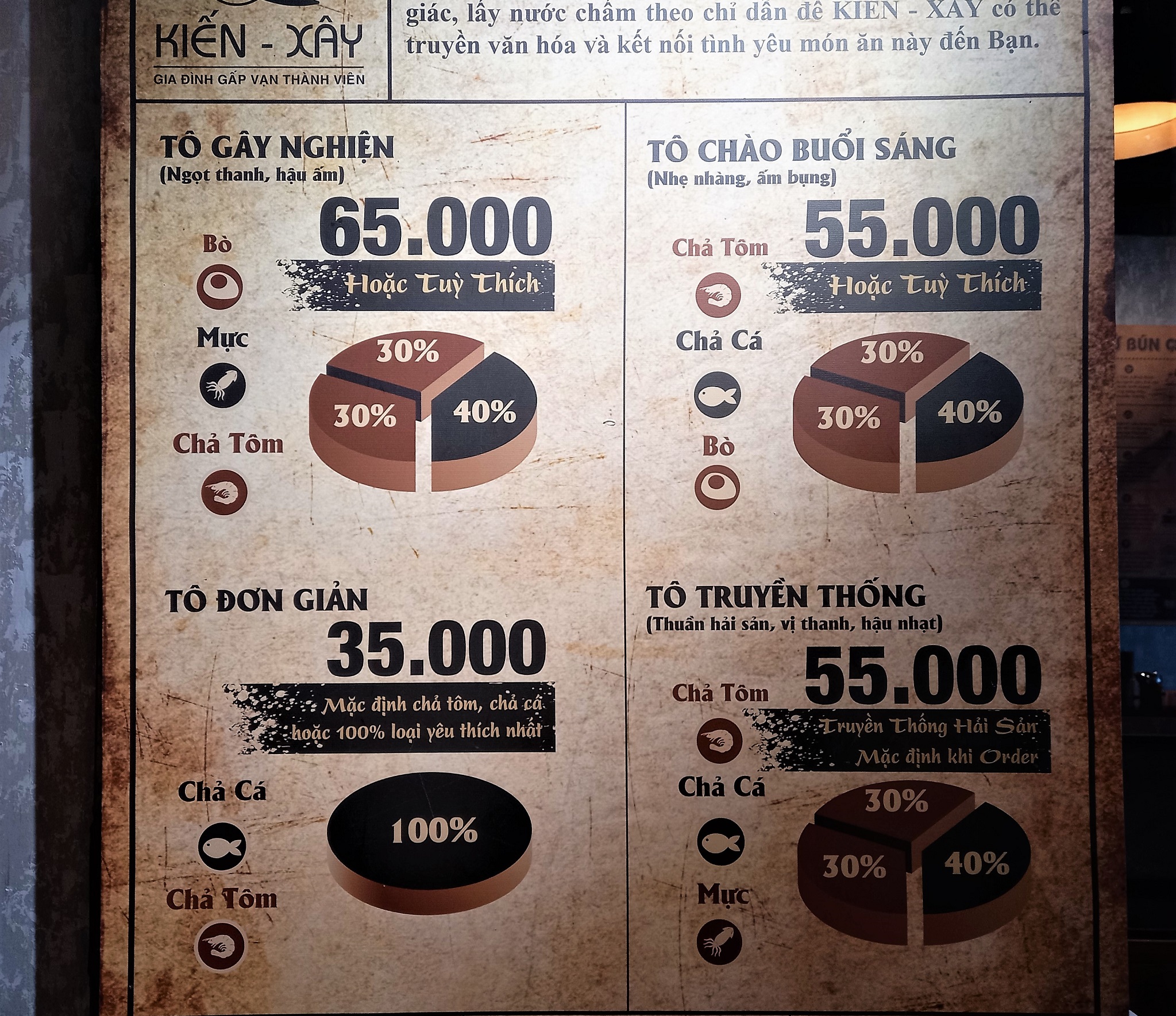
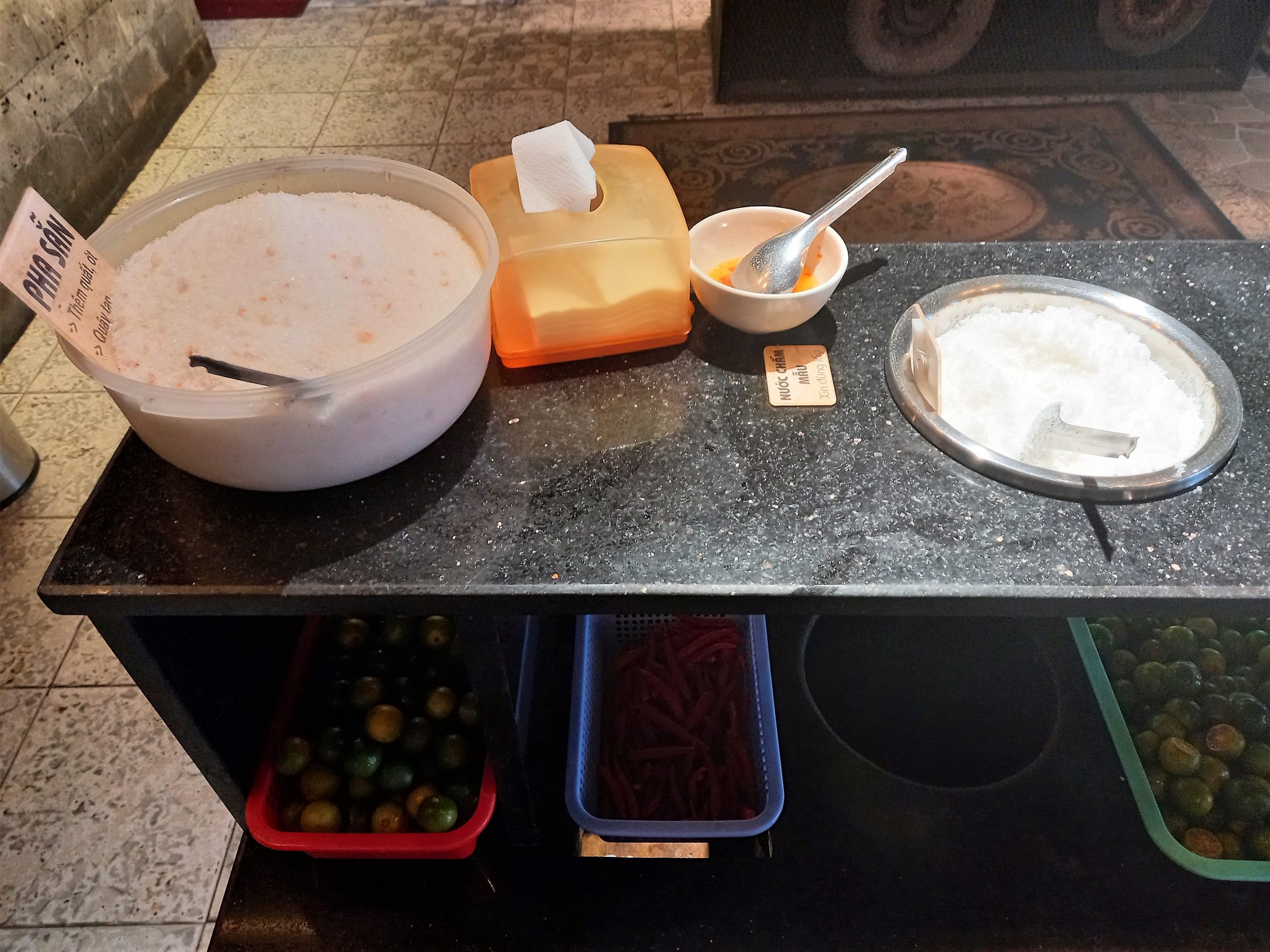
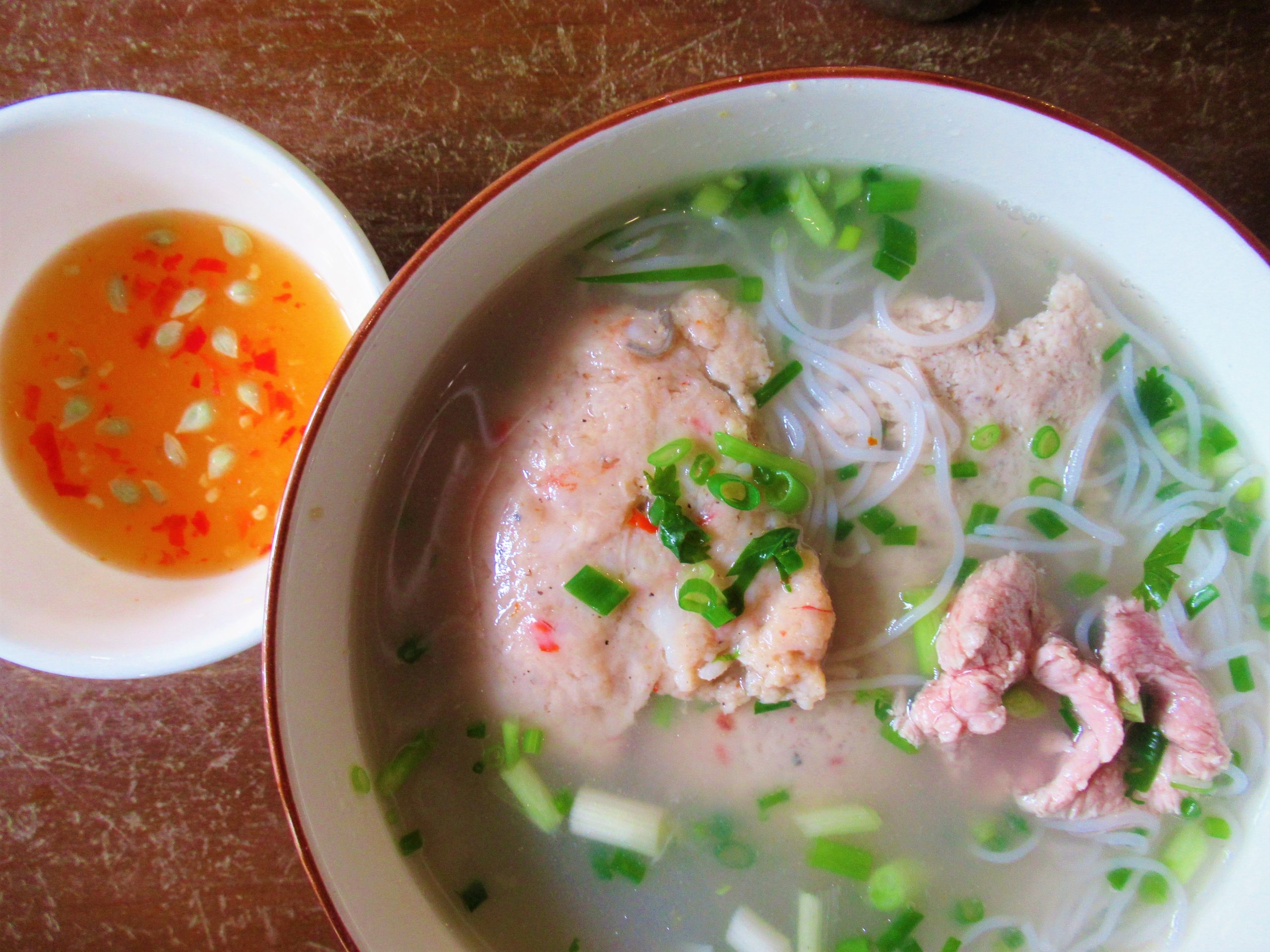
Disclosure: I never receive payment for anything I write: all my content is free & independent. I’ve written this guide because I want to: I like this noodle soup & I want my readers to know about it. For more details, see my Disclosure & Disclaimer statements here
[Back Top]

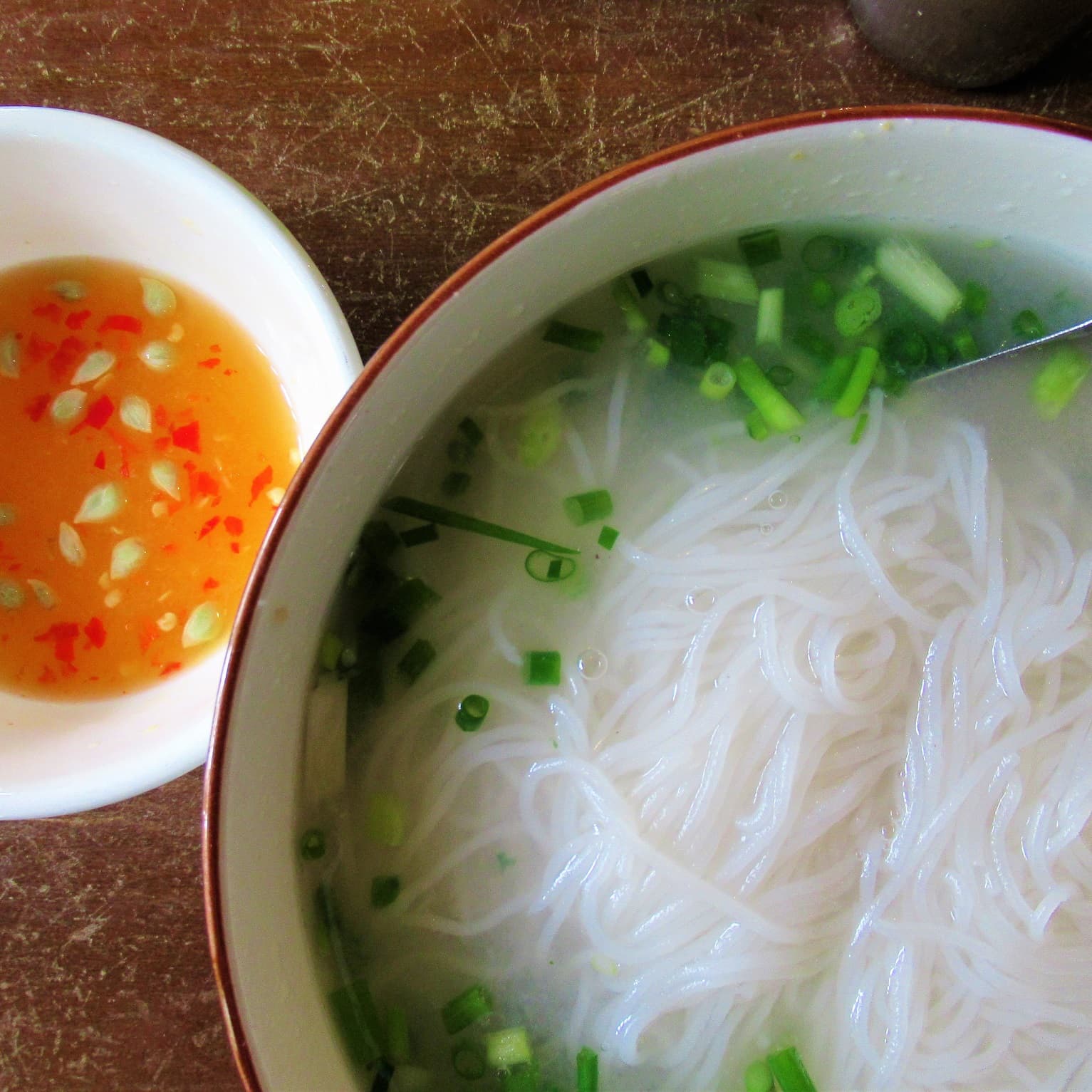
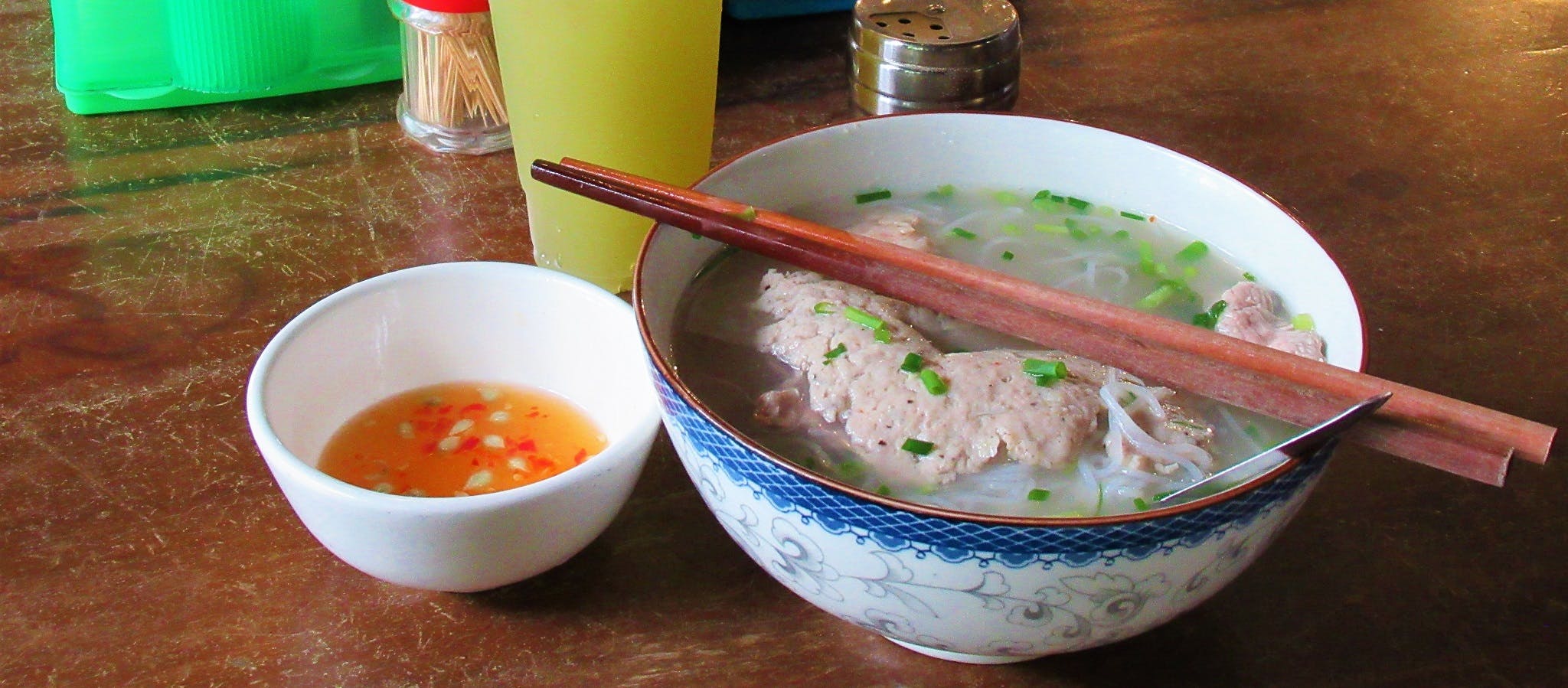
Kiến Xây is fantastic. The last time we were on Phu Quoc, my wife made us go every single day. Once, we even went twice in a single day. A friend who worked at the Intercontinental Phu Quoc for a few months would drive to Kiến Xây every week (not exactly a short drive, either).
I was excited when I saw they have an outlet in Saigon. Unfortunately, I noticed it right before all the covid lockdown stuff hit (i.e. several months ago at this point), so we haven’t had a chance to try it out and see how it compares to the original location.
Hi Justus,
Glad to hear you like bún quậy at Kiến Xây too. I hope you get a chance to try it at the Saigon location at some point. So far, it seems to me that it’s just not the same anywhere else (even at their other outlets) as in the original Duong Dong harbour location.
Best,
Tom